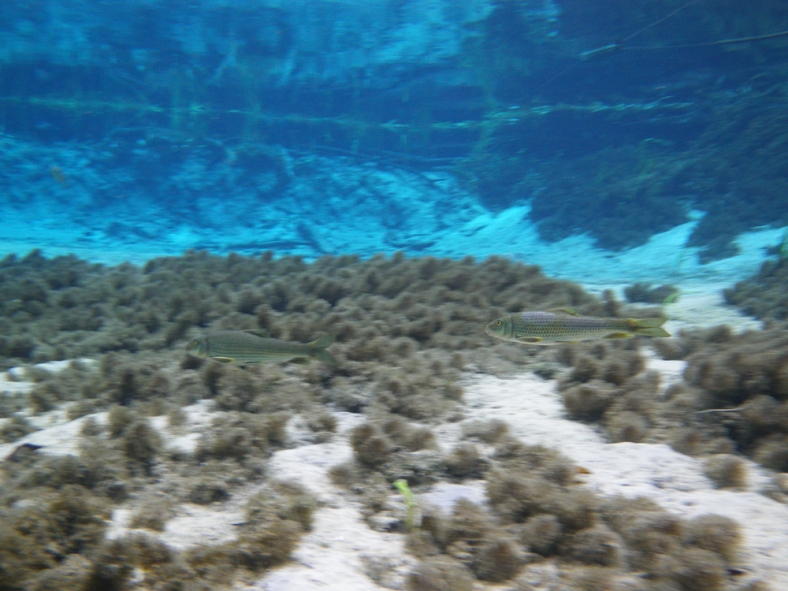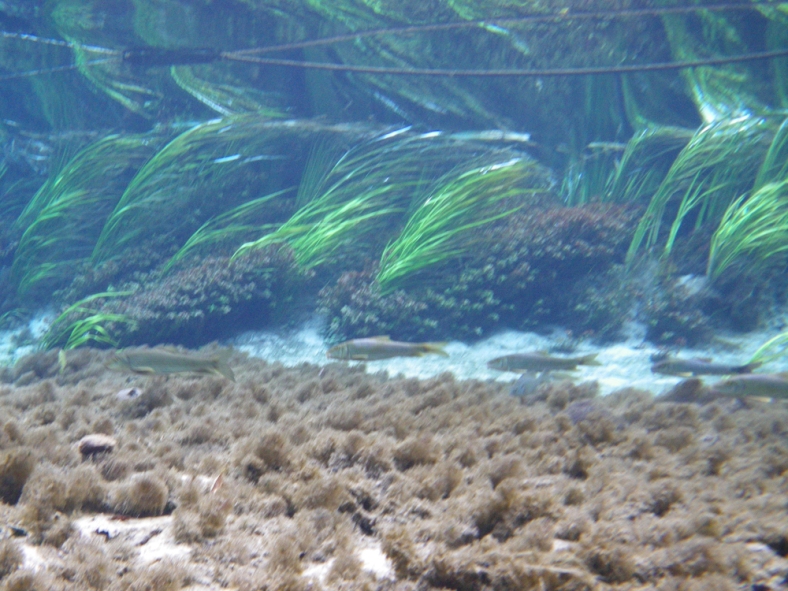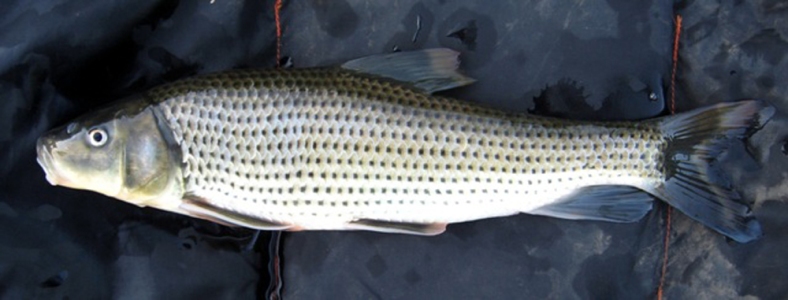
Spotted sucker (Minytrema melanops) swimming in the Head Spring of the Ichetucknee River, Florida, USA. (Image Credit: Ben Young Landis/CC-BY)
I recently traveled to Gainesville, Florida, for the annual meeting of the National Association of Science Writers. Before meeting up with other science and nature writers, however, I joined local friends for a canoe tour of the nearby Ichetucknee Springs State Park.
While South Florida may be world-famous for its beaches and nightlife, northern Florida is renowned for its natural springs. Yet for many of us accustomed to the urbanized world, “spring water” is but a label on a plastic bottle — an advertiser’s suggestion of purity and quality, hitched to the name of some exotically named location.
But for the people of Florida, natural springs are the primary source of drinking water, as well as a major tourism draw. Rainwater filters through Florida’s karst and sand geology to enter the immense, natural subterranean storage system that is the Floridan aquifer — before reemerging into our earthly realm in the form of cool, crystal-clear water, feeding rivers verdant with life:
The Ichetucknee River is one such ecosystem. Even though we visited on a clouded, rainy day, the radiant blue of the Ichetucknee’s waters easily fought through the gray-gloom light to greet our eyes.
Our canoe ride down the six-mile (10 km) span of the Ichetucknee River saw us drenched in steady rain.
Oddly, this made for a soulful, primal experience — we three paddlers alone on the water, rarely coming across another traveler. It was us and the river and its denizens: the curious otter undulating itself towards the riverbank, looking back at us with its glossy eyes; the wiry, still coils of a brown water snake hung from a cypress branch; troupes of damselflies alighting here and there on our hands and heads, as if anointing us with some silent sign of approval from the river.
After the canoe tour, we returned to the top of the Ichetucknee to snorkel in its head spring. By this time, a bit of sunlight brightened the landscape — and the waters.
It was, without exaggeration, like swimming in an aquarium.
The fishes swimming in this azure pool would not be unfamiliar to many North American anglers. Largemouth bass (Micropterus salmoides) hovered in the shade, while various species of sunfish (Lepomis spp.) peered and pecked along the thickets of aquatic plants.
One fish new to me was the spotted sucker (Minytrema melanops), which cruised along the spring bottom, using their underslung jaws and fleshy lips to suck up sand and sift out crustaceans and aquatic insects (White and Haag 1977). Wary feeders, their sleek, spotted bodies easily swam out of the way as I approached, like herds of deer browsing and pausing across a meadow.

Spotted sucker (Minytrema melanops) swimming in the Head Spring of the Ichetucknee River, Florida, USA. (Image Credit: Ben Young Landis/CC-BY)
Spotted suckers belong to Family Catostomidae, collectively known as “suckers” after their mouth shape and feeding habits. All are freshwater species, with nearly 80 in the United States, Canada and Mexico, and curiously, one in Siberia and one in China. Their names are as diverse as their range of shapes, sizes and colors — quillback, chubsucker, hog sucker, buffalo, jumprock, razorback, redhorse. And during breeding time, many sucker species get pimply — they develop bumpy growths called tubercles on their fins, and depending on the species and gender, on their heads as well.
The spotted sucker has a wide geographic range, spanning southern Ontario down through more than 22 states in the U.S., including Wisconsin, Kansas, Pennsylvania, Kentucky, North Carolina, and the Gulf Coast states like Texas, Louisiana, Mississippi, Alabama and Georgia.
But I will count myself as lucky to have swum with them here at Ichetucknee Springs. Spanish conquistadors once searched Florida for the mythical fountains of youth, and my brief time on and in these waters certainly had similar effects — turning back the clock to a simpler, wilder state of mind, flowing as bright, clear and free as the springs themselves….
Minytrema melanops (Rafinesque, 1820)
Spotted Sucker
Click for name etymology (ETYFish Project)
Click for names in other languages (FishBase)
Class Actinopterygii (Ray-finned Fishes)
Order Cypriniformes (Carp-like Fishes)
Family Catostomidae (Suckers)
FishBase Page: http://www.fishbase.org/summary/2996
Citations
I must extend special thanks to my friends and colleagues Catherine Puckett and Rachel Pawlitz for guiding me on the Ichetucknee tour, in particular for my use of Rachel’s underwater camera and for Catherine’s encyclopedic knowledge of the Ichetucknee’s flora and fauna. I highly recommend reading Catherine’s essay on writing, womanhood and serpents, titled “Beauty and the Beast”, published in the nature writing anthology Trash Animals from University of Minnesota Press.
I would also like to draw attention to a new website called The ETYFish Project, created by Christopher Scharpf and Kenneth J. Lazara. This amazing new resource is a growing index of the etymology — name origins and meanings — of scientific names of known fishes. Needless to say, this is an unfinished and continuing task, but the current collection is already unbelievably impressive. I will link to ETYFish etymologies wherever possible from here on.
— Ben Young Landis





Good article! I recently caught a 17.5 inch Spotted Sucker while fishing in Northern Florida. Its definitely one of my most unique freshwater catches I have had in the state of Florida.